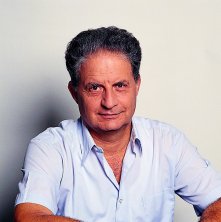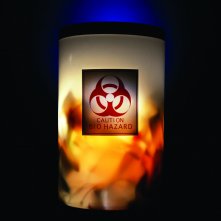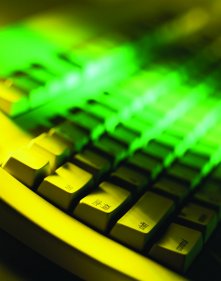New methods of making the world more secure
With the need for security at an all-time high, finding new ways to stay ahead of terrorists is an ongoing challenge—and Weizmann Institute scientists are using new discoveries in basic research to stay ahead in the security game.
Prof. Yehiam Prior of the Institute's Department of Chemical Physics is researching the detection of trace explosives with lasers and developing an innovative method to protect computer conversations from eavesdroppers.

Finding a needle in a haystack
The detection of materials employed in explosives is generally done by moving suspect particles from a given location, such as a person's clothing, to a detector for analysis. For example, "puff machines," which are installed in many airports, blow a puff of air across a traveler's clothes and skin and into a machine. If the traveler has had any contact with a number of "red flag" substances, such molecules will be detected and identified.
Puff machines may be adequate for airport security purposes, but contact detection has limitations, says Prof. Prior.
"Puff machines identify molecules by their mass and the way in which they shatter into their fragments. This is fine for common explosives such as TNT, but it does not work for complex objects such as anthrax. Some compounds may be too similar to other compounds to make a distinction by weight only," he explains.
Prof. Prior's laboratory is also working on an innovative method that employs laser light to identify trace explosives. The technique is based on the principle that the reflection of light shined on molecules provides a unique "optical fingerprint" that computers can be trained to identify. Thanks to the special properties of lasers, detection can be done from afar, negating the need to bring a suspect molecule to a machine.

A fascinating aspect of this technology is that pulses of laser light can be shortened and manipulated to selectively excite individual bonds within a molecule before that molecule has a chance to redistribute its excitation within all degrees of freedom. The pulses are so short that they must be measured in "femtoseconds"—one millionth of a billionth of a second.
Using selective excitation by these ultrashort pulses, methods are being developed to identify minute amounts of a material—for example, 10 drops of a hazardous substance in a large lake.
When fully developed, one may envisage a remote sensing laser-based machine that will routinely and nonintrusively monitor crowds and identify people who have been in contact with hazardous substances.
Making computer communication more secure
The word "eavesdropping" conjures up images of listening in on a private telephone conversation from an extension phone in another room. But eavesdropping can easily be done on computer conversations: the message is simply diverted to another computer, read, and sent on its way without the user's knowledge.

Weizmann scientists are striving to make communication more secure by preventing a message from being read without the knowledge of the intended recipient. One method is to scramble the message so that it is difficult to decipher without knowing the code.
In a good example of Weizmann's complementary research, Prof. Prior is taking a different approach to this problem. In order to make it impossible to surreptitiously intercept a communication, he has tapped the principles of quantum mechanics by invoking the power of photons, which are massless particles. Single photons can be copied by a computer, but if they are prepared as entangled pairs, any manipulation of one of them can be undeniably traced.
"Photon-tapping is not possible if photon pairs are used, because the connection between the two photons is such that when one is detected the other one, which might be miles away, will tell the difference. Therefore, any conniving listener will leave a clear sign of the intrusion," explains Prof. Prior.
These are just two examples of projects that will be tackled in the Nancy and Stephen Grand Research Center for Sensors and Security, which is being established at the Institute with a $5 million grant from Nancy and Stephen Grand. The interdisciplinary center will enable Weizmann physicists, chemists, and biologists to work together on useful technologies that make the world a safer place.
"In the next few years, we want to build on our significant strengths and establish several new research groups in these and related fields. This will enable us to develop new methods to win the confrontation between the bad guys and us," says Prof. Prior.
Prof. Yehiam Prior's research is supported by the Nancy and Stephen Grand Research Center for Sensors and Security; the Schmidt Minerva Center for Supramolecular Architectures; and the Wolfson Advanced Research Center for Bio Micro Technology. Prof. Prior is the incumbent of the Sherman Professorial Chair of Physical Chemistry. The Weizmann Institute of Science in Rehovot, Israel, is one of the world's foremost centers of scientific research and graduate study.The American Committee for the Weizmann Institute of Science is a community of dedicated people who share a common vision in support of the Institute.The generous assistance the Weizmann Institute receives from individuals, foundations, and corporations is vital for its future. Committee members show their devotion to the advancement of the Institute's goals by becoming partners in the search for answers to the most difficult challenges facing humanity.
